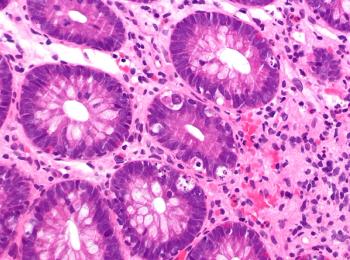
Inherited Mutation Linked to Development of Pediatric ALL
A mutation of the PAX5 gene has been found to play an important role in inherited cases of B-cell precursor acute lymphoblastic leukemia (B-ALL). The mutation was isolated in two unrelated families with high propensity for B-ALL.
A mutation of the PAX5 gene has been found to play an important role in inherited cases of B-cell precursor acute lymphoblastic leukemia (B-ALL). The mutation was isolated in two unrelated families with high propensity for B-ALL.
“We’re in uncharted territory,” said study senior author Kenneth Offit, MD, MPH, of Memorial Sloan-Kettering Cancer Center in New York, in a
B-ALL is the most common pediatric malignancy, and children with affected siblings have between a twofold and fourfold higher risk of developing the disease. PAX5, a lymphoid transcription factor gene, is mutated in a variety of ways in approximately 30% of B-ALL cases. The new study focused on a newly described heterozygous germline variant of PAX5, c.547G>A, which encodes a protein known as p.Gly183Ser.
This mutation, found by exome sequencing, was present in two unrelated families with high rates of B-ALL; one family was of Puerto Rican ancestry and the other was of African American ancestry. The PAX5 mutation was the only mutation found to be common between the two families.
Those individuals with the mutation all exhibited 9p deletion within leukemic cells. Further analysis showed that the mutation yielded significantly reduced transcriptional activity from PAX5 compared to wild-type PAX5 (P < .0001). It appears, however, that the inherited mutation results in only “modest attenuation” of PAX5 activity accompanied by a somatic loss of the wild-type PAX5 allele thanks to the 9p alterations during leukemogenesis; in contrast, the PAX5 deletions and translocations that occur as non-inherited, somatic events in many B-ALL cases result in complete loss or “marked attenuation” of the protein’s transcriptional activity.
Overall, the researchers wrote that these findings suggest that somatic 9p alterations could be a harbinger of the germline mutation found in this study. “The recent identification of germline TP53 mutations in familial ALL and the data presented here strongly implicating PAX5 mutations in a new syndrome of inherited susceptibility to pre-B cell ALL indicate that further sequencing of affected kindreds is required to define the full spectrum of germline variations contributing to ALL pathogenesis,” they concluded.
Newsletter
Stay up to date on recent advances in the multidisciplinary approach to cancer.

















































































